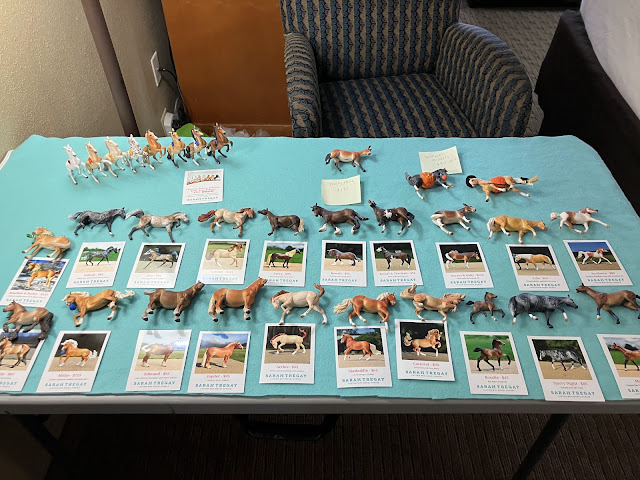Even the title here, In-Person vs. Online Sales, has a little bit of tension implied. This year while at Breyerfest, I caught a social media comment or two that echoed this feeling.

As an artist, I value every hobbyist who enjoys my work. That's why I create models—to share, to make someone smile, to bring a Stablemate-sized moment of joy.
As a itty-bitty business, I create models to sell. I use the money I make to take care of my horse, Mr. Pots. He is 29 this year and needs medicine, special food, a farrier, a vet, and a dentist. He isn't living in my backyard any more so what I used to spend for a year of hay is now spent every month on board.
I'm going to be honest. I prefer to sell models in-person.
As an artist, I want every customer to see the model before they decide to make a purchase. I want them to pick it up and turn it in the light. I want them to ask questions: what mold is this? what changes were made? what materials were used? I want them to be happy with the model they buy.
As a itty-bitty business, I prefer cash. I get to keep the money and not pay $3 to $7 in fees.
Does this mean I don't value my online customers? Not at all.
I have a website shop (https://sarahtregay.com/shop.html) that I update when I have models to sell. I ask that customers contact me via e-mail to inquire about a particular model and arrange payment and shipping. I ship overseas.
As an artist, I want those making online purchases to see the model the best they can. Try my best to show the model from many angles so you can see details like face markings and dorsal stripes. It's not the same as in-person, but I hope it helps in making the decision to buy.
So, preferences aside, I appreciate everyone who took a minute to look at my models at Breyerfest and/or to visit my website. Thank you.
I will be updating my website soon. Please refresh your cache to get the latest version.
Comments
Post a Comment